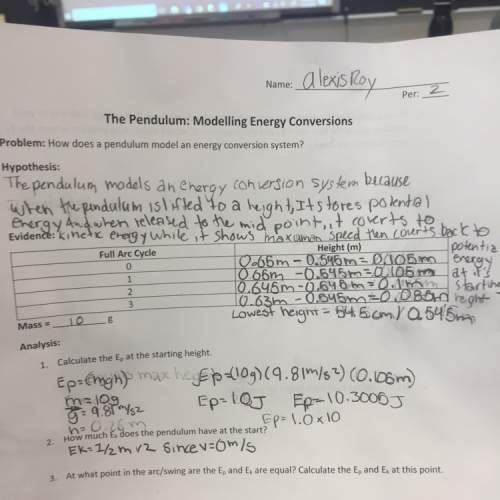
Physics, 06.05.2020 05:46 AIhunter2884
When an earthquake occurs, two types of sound waves are generated and travel through the earth. The primary, or P, wave has a speed of about 8.0 km/s and the secondary, or S, wave has a speed of about 4.5 km/s. A seismograph, located some distance away, records the arrival of the P wave and then, 77.2 s later, records the arrival of the S wave. Assuming that the waves travel in a straight line, how far (in terms of m) is the seismograph from the earthquake?

Answers: 2


Another question on Physics

Physics, 22.06.2019 06:30
Alead ball is dropped into a lake from a diving board 5m above the water . it hits the water with a certain velocity and then sink with constant velocity in bottom . it reaches the bottom 5 second after it is dropped if g= 10m/s2 . find depth of the lake and average velocity of the ball ?
Answers: 1

Physics, 22.06.2019 08:30
Pl asaaap ! match the term to the correct description. a type of wave that transfers energy where the particles in the medium move perpendicular to the direction in which the energy is traveling. a type of wave that transfers energy where the particles in the medium move parallel to the direction in which the energy is traveling. movement that is back and forth, like an equal sign = a type of wave that transfers energy where the particles in the medium move in a circle motion while the energy travels left or right. movement that is like a t transfers energy from one location to another 1. wave 2. parallel movement 3. perpendicular movement 4. transverse wave 5. longitudinal wave 6. surface wave
Answers: 1

Physics, 22.06.2019 12:20
Which of the following situations is impossible? a) an object has velocity directed east and acceleration directed east. b) an object has zero velocity but non-zero acceleration. c) an object has constant non-zero velocity and changing acceleration. d) an object has velocity directed east and acceleration directed west. e) an object has constant non-zero acceleration and changing velocity.
Answers: 2

Physics, 22.06.2019 15:50
If the work required to stretch a spring 3 ft beyond its natural length is 15 ft-lb, how much work is needed to stretch it 27 in. beyond its natural length?
Answers: 1
You know the right answer?
When an earthquake occurs, two types of sound waves are generated and travel through the earth. The...
Questions

Social Studies, 12.11.2020 06:50

History, 12.11.2020 06:50


Physics, 12.11.2020 06:50

Biology, 12.11.2020 06:50



Biology, 12.11.2020 06:50


Biology, 12.11.2020 06:50


English, 12.11.2020 06:50

Biology, 12.11.2020 06:50

Social Studies, 12.11.2020 06:50

Health, 12.11.2020 06:50

Biology, 12.11.2020 06:50



English, 12.11.2020 06:50

English, 12.11.2020 06:50








![d[\frac{1}{4.5}-\frac{1}{8}]=77.2](/tpl/images/0646/9469/edc08.png)
![d[0.0972]=77.2](/tpl/images/0646/9469/38980.png)




